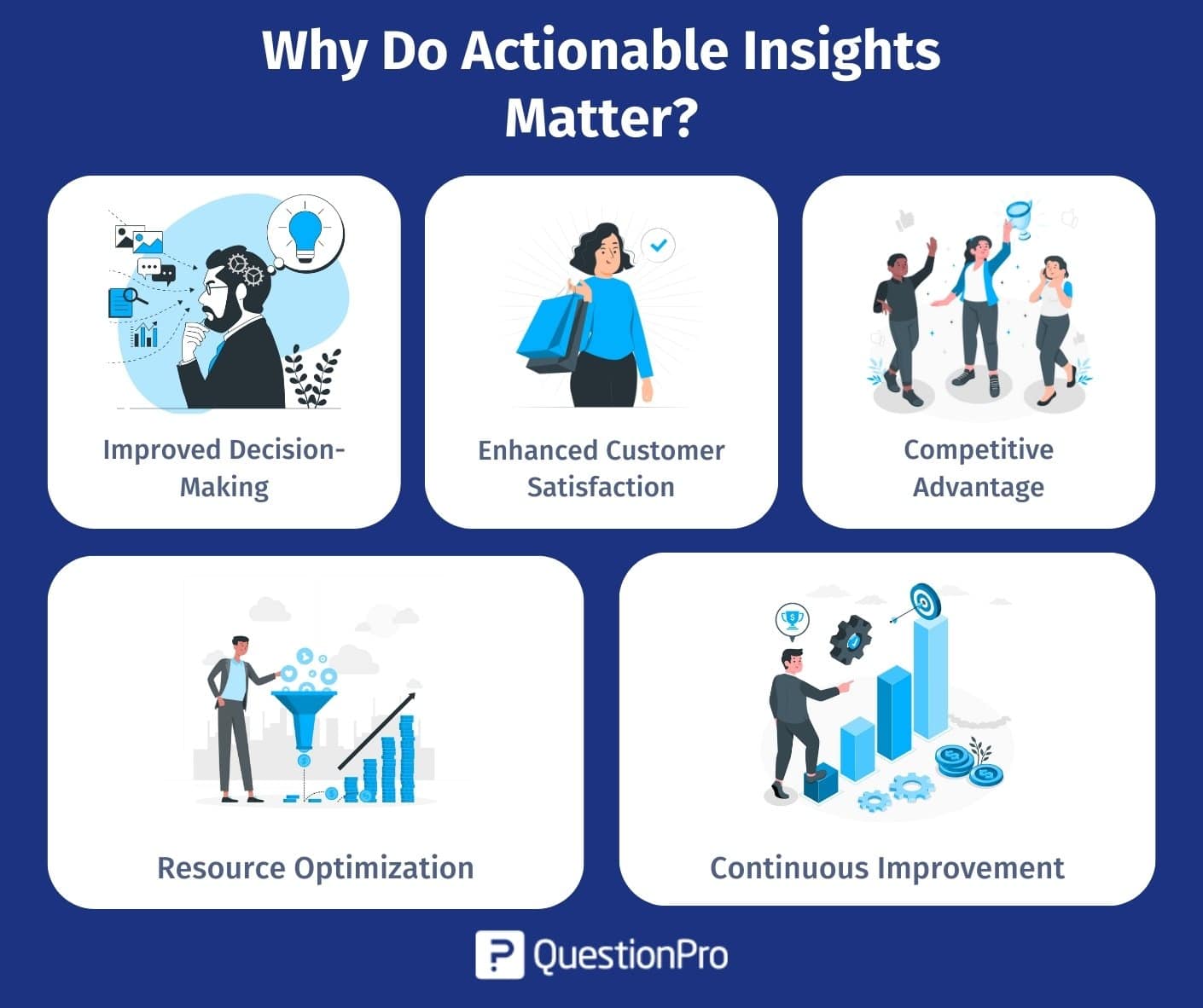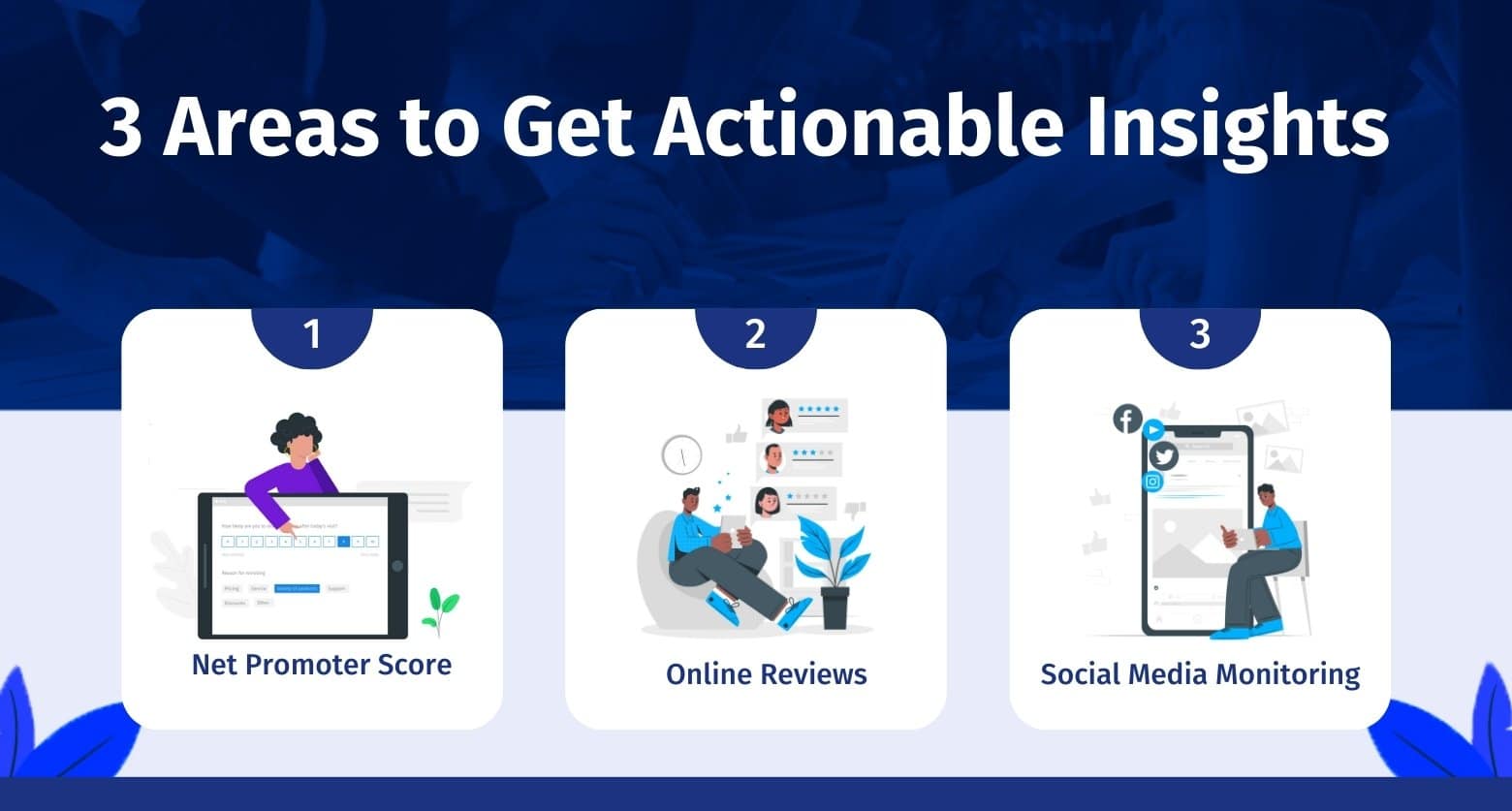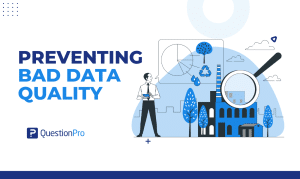
While it’s vital, collecting sales, customer, and inventory data isn’t enough to build growth-influencing innovations. Management must still comprehend this information and use “actionable insights” to formulate a strategy. Otherwise, the impact of crucial KPIs may be missed.
Actionable insights guarantee organizations may use the acquired information to create a plan to enhance different company operations and services. Research by Forrester revealed that insight-driven businesses expand up to eight times more quickly than the world’s GDP.
Therefore, gathering information and producing valuable, actionable insights aids process improvement and company development.
What are the actionable insights?
Actionable insights are specific, data-driven findings or information that provide clear and practical guidance on how to make informed decisions and take concrete actions. Management may use big data sets with actionable insights to create efficient data-driven activities.
These insights may be derived from raw data to provide thorough reports and unit of analysis, which is often collected from customer, sales, and inventory management systems software.
Organizations may identify which operations still require improvement based on this information. It enables management to assess company performance from several angles and make wise choices about how to improve operations and customer service.
With insights, practical steps may be taken to increase average sales, operational effectiveness, and customer happiness. As a result, organizations that aim to make data-driven choices have an advantage when employing actionable insights to advance their business.
Why do actionable insights matter?
Actionable insights matter for several crucial reasons:

Improved decision-making
Analyzing data, including customer feedback and interesting data points, provides businesses with actionable insights. These insights empower informed decision-making, helping organizations make strategic choices that align with customer needs and market trends.
Enhanced customer satisfaction
Actionable data derived from qualitative data analysis can uncover the root causes of customer satisfaction or dissatisfaction. By addressing these issues, businesses can proactively enhance the customer experience, leading to higher customer happiness and loyalty.
Competitive advantage
Businesses that leverage actionable insights gain a competitive edge. They can identify market gaps, emerging trends, and areas for improvement quicker than their competitors. This agility allows for timely adjustments to products, services, and strategies.
Resource optimization
Actionable data analysis enables organizations to allocate resources effectively. Companies can optimize their budgets, personnel, and efforts to achieve desired outcomes more efficiently by focusing on areas that truly impact business success.
Continuous improvement
Insight actionable from qualitative data analysis supports a culture of continuous improvement. By regularly collecting, analyzing, and acting on customer feedback and other qualitative business data, organizations can adapt and evolve to meet evolving customer needs and stay ahead in the competitive landscape.
3 areas to get actionable insights
Here are three places where you can obtain actionable insights:

01. Net Promoter Score (NPS) Surveys for Informed Decisions
- Collect feedback: NPS surveys are a valuable tool for collecting customer feedback, aiding in the understanding of customer sentiments and preferences.
- Drive business outcomes: By analyzing NPS data, businesses can identify areas for improvement and take actions to enhance customer happiness, ultimately driving positive outcomes.
- Target trouble spots: Customize survey questions to pinpoint potential trouble spots while ensuring unbiased, open-ended inquiries that lead to actionable insights.
02. Online reviews and competitor analysis for interesting data points
- Derive actionable insights: Online reviews, when analyzed with text analytics solutions like Thematic, provide actionable insights into customer opinions, product performance, and areas for enhancement.
- Competitive benchmarking: Utilize competitor online reviews to benchmark your products or services and derive insights for strategic improvements.
- Interesting data points: Identify intriguing data points, such as emerging trends and common pain points from both your own and competitors’ analyzed feedback.
03. Social media monitoring for customer journey insights
- Monitor social media mentions: Keep track of social media mentions to gauge brand perception, customer sentiments, and emerging trends.
- Collect feedback: Analyze discussions on social platforms alongside relevant forums and websites to gain comprehensive insights into the customer journey.
- Data-driven decisions: Use insights from social media monitoring to make business decisions, adapt marketing strategies, and enhance customer engagement throughout the customer journey.
The difference between insightful and non-insightful data
The difference between insightful and non-insightful data lies in their ability to find actionable insights and reveal an interesting data point that is relevantly meaningful.
Insightful data
This type of information provides actionable insights, offering specific and relevant information that can guide decisions and actions. It often includes interesting data points that shed light on key trends, patterns, or opportunities, ultimately leading to more actionable insights.
Non-Insightful data
Non-insightful data lacks the depth or relevance needed to inform decisions effectively. It may consist of routine or unrelated information that doesn’t contribute to a better understanding of a situation or problem. Without the presence of interesting data points, it tends to offer fewer insights of relevance.
Insightful data delivers more actionable insights through the presence of interesting and relevant data points, while non-insightful data needs to provide more valuable guidance for decision-making and actions. Leveraging tools like Google Analytics and conducting thorough analysis can help extract more insights from information and make it more related to business objectives.
Data implementation techniques for actionable insights
It takes a new set of abilities and a different way of thinking to turn good information into helpful information.
Rules for drawing insights from data:
Collaboration
Mutual understanding is key to the team’s success. Teams must collaborate to gain meaningful data insights. Confrontation and demand offer fewer insights than communication and support.
Transparency
The analyst understands data sources, methods, and measurements. Management understands its aims and questions. Both sides must communicate openly and transparently to comprehend each other’s demands.
Specificity
Business units must comprehend their income, costs, and risks. All stakeholders must describe their criteria, purposes, and objectives to identify representative data sets. Data analysts need clarity to monitor the correct parameters.
Principles used in practice:
Explain the query or queries in detail
Vagueness may cause havoc. Consider this illustration: Before you can answer someone who asks, “How do I go to the airport?”, you need further details like Where are they right now? Are they picking someone up or flying?
Explain the importance, setting, and commercial implications
You may choose which metrics to track and how to do so by considering the analysis’s constraints, goals, and reasons. The aim? Establish a link between the measures and the meaning the information conveys.
Establish precise goals for the data analysis’s output
Specify what insights you can get from the information you’ll be supplying. For instance, should you provide the total amount, the average number, or the change rate?
It creates quantifiable KPIs
Make sure quantifiable measures accompany the queries. The SMART structure may be used to confirm (Specific, Measurable, Attainable, Relevant, and Time-based).
For the most clarity, formulate a hypothesis
All of the objectives mentioned above may be met by defining a hypothesis. This is an example of a view: if A is the result, the business will experience XYZ. If B happens to be the result, our company will benefit from ZYX.
Collect the correct data properly
Select the metrics that can display the necessary data. A strategy for how to get to the outcomes that lead to the desired answers may need to be created after correlating data from several measurements.
Be sure to segment
By segmenting it, you may become more focused and get a more refined perspective on your data. You may narrow in on a specific subset of data, such as a website section, a sector of business, or an audience, before delving further into the behavior of that data.
Link the data sources together
Consider combining data from secondary research and sources from several fields. Select the resources that will provide you with the highest quality facts to support your desired outcome.
Correlate the data
Examine connected metrics that affect one another. For instance, to put the traffic numbers in proper customer perspective, you should constantly keep a keen eye on your website traffic.
Find the context
We’ve highlighted the value of specificity so far. However, you must evaluate this specific data point in the context to comprehend the meaning and determine the effect or consequence.
Conclusion
Achieving success requires actionable insight. They encourage wiser choices and direct your marketing initiatives toward success.
Suppose you want to discover a strategy that works for your business. In that case, you can also think about trying out a few different ones. Every technique discussed in this article will help you improve your action plan for converting data into valuable insights for the benefit of your business.
Data is worth relatively little unless it is transformed into crucial actionable insights. The design and production processes may be improved with these insights, which can also be utilized to enhance decision-making. Therefore, insights are the new gold, not data.
At QuestionPro, we provide researchers access to a library of insights for long-term research and data collection tools like our survey software. Please visit the InsightHub if you’d like to watch a demo or learn more about it.
Frequently Asked Questions (FAQ)
Actionable insights are specific, data-driven findings that provide clear guidance on how to make informed decisions and take practical actions.
Implementing actionable insights involves analyzing data, setting priorities, and taking concrete steps to address identified opportunities and challenges.
Techniques like data segmentation, trend analysis, and predictive modeling can assist in uncovering actionable insights within datasets.







